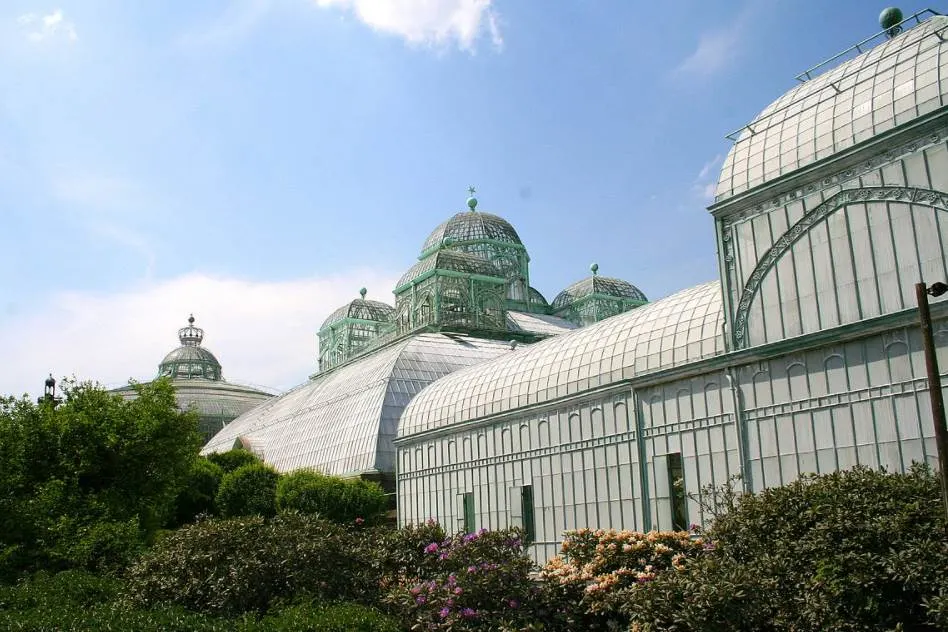You need to specially plan a visit to these famous greenhouses in the northern part of Brussels because they are located in the private garden of the Royal family of Belgium.
That being said, a visit to this incredible feat of nature that houses a wide variety of plant and tree species is definitely worth your time and effort.
Let’s take a closer look at some of the most interesting facts about the Royal Greenhouses of Laeken, a vast complex of monumental structures that has some interesting stories to tell.
1. The greenhouses are located in a northern suburb of Belgium’s capital
The Royal Greenhouses of Laeken are located in Laeken, a suburb that is part of the Metropolitan area of Brussels, the capital of Belgian. They are situated about 5 kilometers (3 miles) north of the city center of Brussels.
The immense 19th-century structure is situated within a large park called the Royal Domain of Laeken. This park is entirely located within the outer ring road of the city.
You can find a wide variety of landmarks and attractions just west of this park as well. Some of these include the Atomium, the Royal Planetarium, Mini-Europe, and the national stadium of Belgium called the King Baudouin Stadium.

2. They are part of a private park of a Belgian Royal Palace
The Royal Domain of Laeken is a private park owned by the Royal Family of Belgium. It’s here that they have their official residence, the immense Royal Palace of Laeken. This is not the same palace as the Royal Palace of Brussels which serves as the administrative headquarters of the Kings of Belgium.
This palace was originally built by the Governors of the Habsburg Netherlands between 1782 and 1784 and was originally referred to as the “Palace of Schonenberg.” It was partially destroyed by fire in 1890 but rebuilt to its former glory shortly after.
The Royal Greenhouses of Laeken are an integral part of this amazing palace complex in Brussels and are part of the private garden of the Belgian royal family.
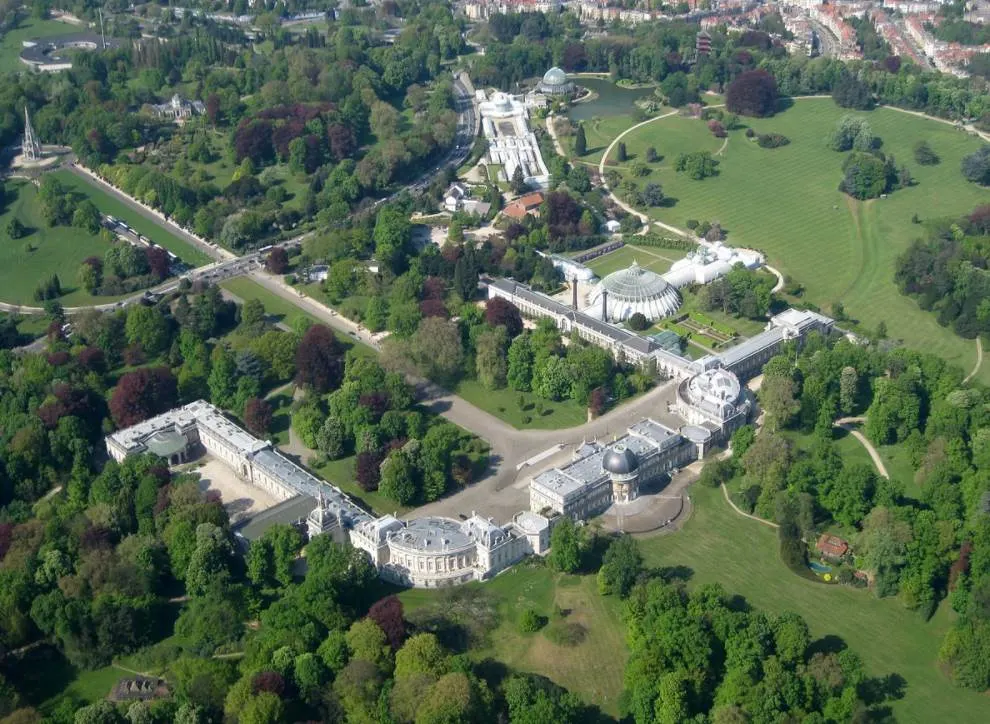
3. The greenhouses were commissioned by the second King of Belgium

The second King of Belgium was King Leopold II, a controversial figure due to his escapades in Belgium’s only colony, Congo in Africa. He had visited the Crystal Palace, an immense former greenhouse in London, in 1851 and wanted a similar structure next to his residence.
The Chrystal Palace was originally built in Hyde Park for the Great Exhibition of 1851. It was moved to a location in the southern part of London after the event and eventually destroyed by fire in 1936.
The style of the Royal Greenhouses of Laeken with cast iron and glass panels was inspired by the greenhouse in London and designed by Belgian architect Alphonse Balat (1818-1895) in cooperation with the king himself.
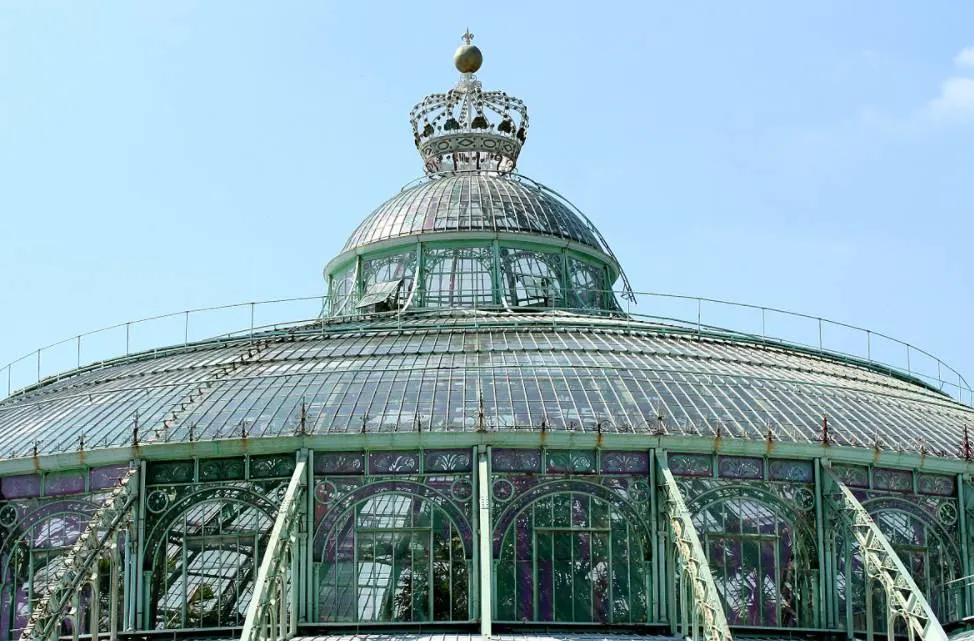
4. It took nearly 2 decades to complete the project in the late 19th century
King Leopold II didn’t mess around when it came to the scale of this project. His love for plants and lavish lifestyle resulted in one of the most astounding greenhouses ever constructed.
It wasn’t merely a greenhouse because it ended up becoming an integral part of the palace, allowing him to welcome guests at a banquet hall or watch a performance in the theater that was located inside one of the structures.
The construction of the greenhouse complex started in 1874 and wasn’t completed until 1893. The final building to be completed was the so-called “iron church,” a massive domed structure that was intended to become the private chapel of the Royal Palace of Laeken.
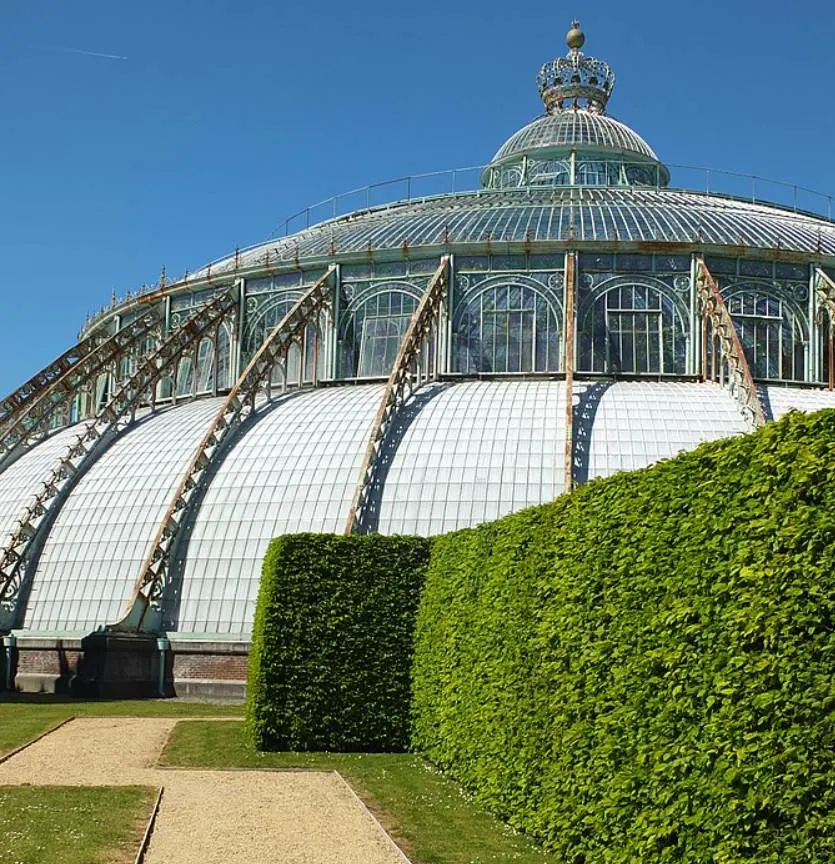
5. The greenhouses can be visited during two weeks of the year
The greenhouse complex in Laeken consists of tropical, subtropical, and cold greenhouses, and is home to hundreds of different types of plant species. The main attractions, however, are the buildings themselves which were mighty important in the development of cast-iron architecture.
The lucky people that can visit this monumental complex are either state leaders and their families, or tourists who can make it to Brussels during the two weeks a year that the greenhouses are open to the public.
This period is in April and May, the time of the year when most flowers inside the greenhouses are in full bloom. The highlights of the collection are exotic plants that were brought back from Congo and an orange tree collection of which many are hundreds of years old.
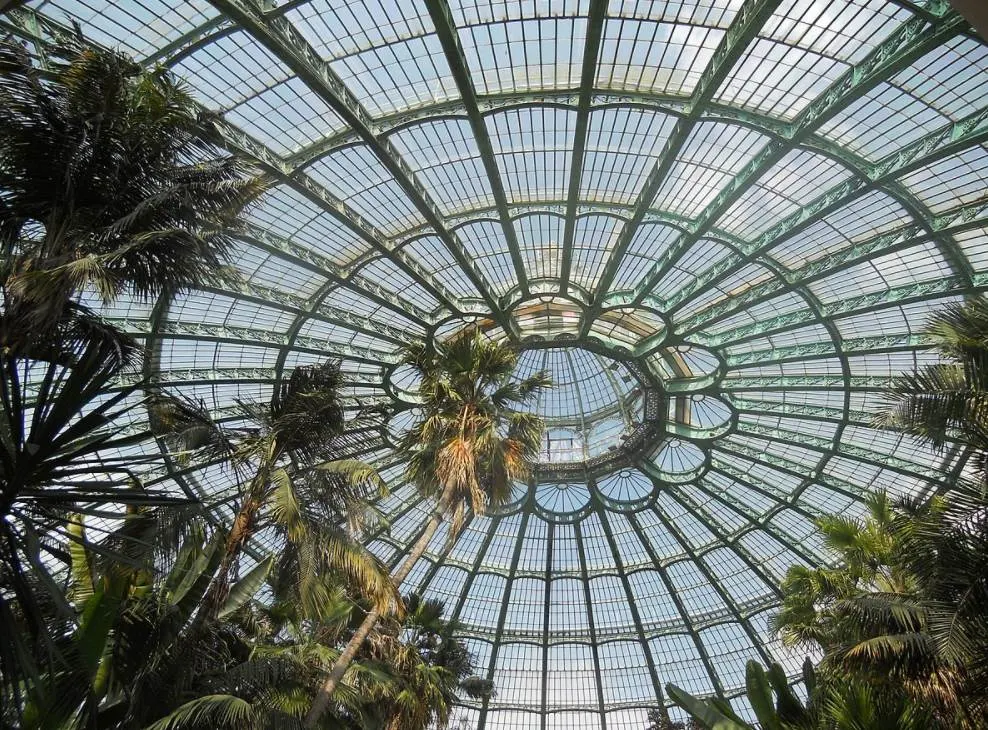
More interesting facts about the Royal Greenhouses of Laeken
6. The Chrystal Palace in London wasn’t the only greenhouse that served as the source of inspiration for the construction of the Royal Greenhouses in Laeken.
The other greenhouse that inspired architect Alphonse Balat were the Palm House at Kew Gardens which was completed in 1840. This was the first cast-iron structure of this scale to be built and inspired a wide number of greenhouses in Europe and beyond.

7. The Winter Garden is a large domed building that serves as the main structure of the entire greenhouse complex. It isn’t the only large-scale greenhouse in Laeken because multiple similar structures interconnect the complex.
The other greenhouses of the complex, which cover a combined area of 2.5 hectares (6.2 acres), are called the Palm Greenhouse, the Congo Greenhouse, the Diana Greenhouse, and the Embarcadère Greenhouse.
8. The Winter Garden is a round structure that is supported by a circular collonade of Doric columns. It has a diameter of 57 meters (187 feet) and height of 25 meters (82 feet), dimensions that made it possible to plant imported Congolese palm trees.

9. King Leopold II is an extremely controversial figure in Belgian history, and his motivations to build this greenhouse complex pretty much confirm this. He not only wanted to have an opulent greenhouse complex next to his residence but also emphasize his colonial power.
This was a period in history in which this man was plotting to establish his private colony called the “Congo Free State.” He managed to fool other European leaders by basing his intentions on humanitarian endeavors which was probably the complete opposite of what he had in mind.
The Congo Greenhouse and the Embarcadère Greenhouse were built between 1886 and 1888 and were specifically constructed for this purpose.
10. The Iron Church, the final building to be completed in 1893, is also referred to as the “Chapel Greenhouse because it was intended to serve as the Royal Chapel. It was designed in a neo-Byzantine style and its dome is supported by 20 massive columns of Scottish granite.
The Winter Garden and Iron Church make the Royal Greenhouses of Laeken one of the most fascinating greenhouses complexes in the world.
